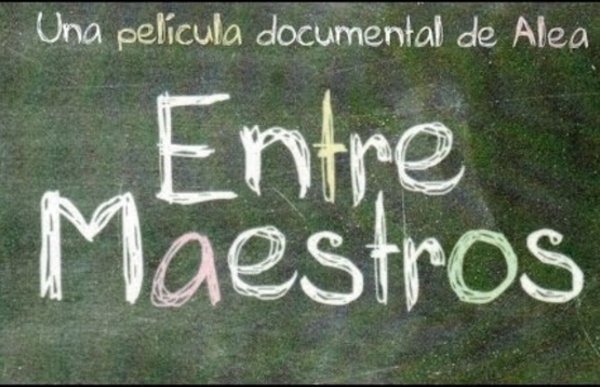



http://www.youtube.com/watch?v=wPaQOT4ybw0
Related: EDUCACIÓNGetting Emotional With… Hartmut Esslinger Professor Hartmut Esslinger is founder and co-CEO of frog design inc. He studied Industrial Design at the College of DesignGermany and received a Doctor honoris causa in Fine Arts from Parson School of Design in New York. He helped to establish brand-building design excellence with global companies such as Sony, Louis Vuitton, Apple Computer, Lufthansa, Motorola, Microsoft, SAP and Disney. The complete guide to taking notes effectively at work Often, you’ll hear people say that you should “trust your instincts” when making decisions. But are first instincts always the best? Psychological research has shown many times that no, they are often no better—and in many cases worse—than a revision or change. Despite enormous popular belief that first instincts are special, dozens of experiments have found that they are not. While that may be a useful fact to bring up in an academic discussion, anyone who has ever made a decision in real life will undoubtedly reply: But I remember times when I made a correct choice, then changed my mind and was wrong. This happens for two reasons: First, humans naturally have something called an endowment bias, where we feel strongly attached to things we already have (our first instinct, in this case).
23 Ways To Use The iPad In The 21st Century PBL Classroom By Workflow 23 Ways To Use The iPad In The 21st Century PBL Classroom by TeachThought Staff The iPad is not magic, and as many educators have found integrating them meaningfully is by no means a just-add-water proposition. The same applies to Project-Based Learning. Project-Based Learning is a method of giving learners access to curriculum in authentic ways that promote collaboration, design, imagination, and innovation while also allowing for more natural integration of digital and social media.
School Days Whether you experience it vicariously through your children, or are simply reliving your own school days, it’s difficult when Labor Day comes around not to feel those old butterfly stirrings of anxiety and anticipation. School, from kindergarten to twelfth grade, is rich terrain for tumult and transformation, and it can be thrilling to see those upheavals explored in fiction. The ur-school story in The New Yorker was, of course, Muriel Spark’s “The Prime of Miss Jean Brodie,” which took up almost an entire issue of the magazine in October, 1961. (Subscribers can read it in full here.) For this collection, we took a look at more recent depictions of the educational life.
Tons of Classroom Examples Using Augmented Reality with @Aurasma - A Complete How-To Guide! How to Use Augmented Reality in Your Classroomthis post is read best via a desktop due to the embedded video content Augmented reality allows someone to add another layer to an existing image. For example, imagine holding your phone over a poster on the wall as if you were going to take a photo of that poster, and then instantly a video starts playing to offer you additional information about that particular poster. Pretty cool, right? The first time it happens, it seems like magic. Reading insecurity: The crippling fear that the digital age has left you unable to read deeply and thoughtfully. Everett Collection Slate is an online magazine, which means you are almost certainly reading this on a screen. It is more likely to be morning than evening. You are perhaps at work, chasing a piece of information rather than seeking to immerse yourself in a contemplative experience. You probably have other tabs open—you will flick to one if I go on too long.
Delft Institute of Positive Design How does design mediate, facilitate, or foster user well-being? What are the universal principles of human experience? If you find yourself asking these questions, then this guide is for you. The Positive Design Reference Guide focuses on the why, what and how of human experience – both in general, and in relation to design for well-being. The guide provides you with a quick entry point into the variety of theories that we believe can be relevant for well-being-driven design. It comprises 29 models, theories and frameworks, separated into two sections. Why such a Website? This is a site for English open lessons, a home for whoever thinks that wherever English is spoken you can feel at home. Nowadays English can be the very common language for each one’s future. Trying to share what we have in common foreshadowing the future, makes all of us equal. That’s what we want to be.
Singularity University Exponential Innovation Program We’ll Prepare You to Innovate Successfully in This New Future In this energizing three-day program, we’ll take you to the future and back, and help you map out a successful innovation journey to propel your organization forward. We’ll explore the most recent advances in exponential technologies (and give you hands-on experience!), provide a deep dive into the latest innovation tools and methodologies for succeeding in an exponential world, and examine the newest leadership and organizational models to support innovation. Upcoming program dates September 25 - 27, 2017
The Historical Precursor to ADHD From the 19th-century "morbid defect of moral control" to the modern understanding of attention deficit hyperactivity disorder We were running errands at a shopping center in Los Gatos, my mother, sister, and me—that night the San Francisco Giants were playing the Oakland A’s in the 1989 World Series, and friends and family would be coming over for dinner to watch the game—when I heard what sounded like someone running toward me. The lights sparked, the shelves swayed, and objects from the aisles showered down.
AEIOU and sometimes Y: How many English vowels and what is a vowel anyway? Gretchen McCulloch How many vowels does English have? Five, right? A, E, I, O, U. Oh, and sometimes Y.